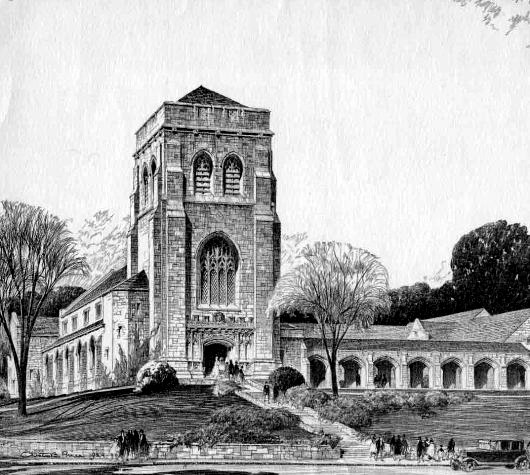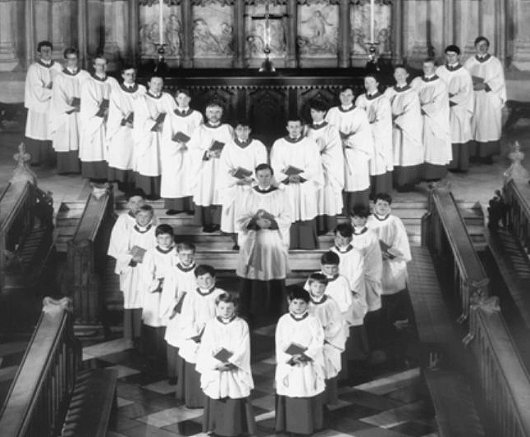
About Andrew Cusack
 Writer, web designer, etc.; born in New York; educated in Argentina, Scotland, and South Africa; now based in London.
Writer, web designer, etc.; born in New York; educated in Argentina, Scotland, and South Africa; now based in London. read more
News
Blogs
Reviews & Periodicals
Arts & Design
World
France
Mitteleuropa
Knickerbockers
Argentina
The Levant
Africa
Cape of Good Hope
Netherlands
Scandinavia
Québec
India
Muscovy
Germany
Academica
High Church Dutch Reformed
Not even the peaceful hills and dales of the Hudson Valley were left untouched by the liturgicalism of the Oxford Movement
SUCH WAS THE influence of the nineteenth-century “Oxford Movement” in the Church of England that it engulfed the great preponderance of the Anglican Communion. It is surprising when you consider that Anglican priests and even a bishop were jailed in England for such scandalous acts as calling the Communion service “the Mass”, wearing vestments, and putting candles on the altar; these are now so widespread in the Church of England to be commonplace. But the Oxford movement also spilled out into other Protestant groups as well. The liturgical movement changed the Church of Scotland in the 1900s, and many of the Kirk’s medieval church buildings that had been converted into pulpit-centered preaching halls were reordered in a way emphasizing the “Communion table” that was an altar in all but name. (Those who can find before & after shots of the ‘Toon Kirk’ of Holy Trinity in St Andrews, Fife will notice this marked contrast).

The liturgical movement even reached the Dutch Reformed Church — not here in South Africa where the Nederduits Gereformeerde Kerk is stronger than anywhere else in the world, but back home in New York. The Dutch Reformed Church is the main church in many of the towns and villages along the banks of the Hudson and in the surrounding valleys, and the village of Bronxville (birthplace & stomping ground of your humble & obedient scribe) is no exception.
The Bronxville Reformed Church (above) sits on a short promontory overlooking the other great institutions of the village right beside it: the School, the Library, and the Village Hall. Yet this is no proud Dutch edifice the likes of which would warm the heart of Diedrich Knickerbocker (such as West End Collegiate). No, instead we are confronted with a handsome English church, and one that is furthermore Catholic in its interior. While the pulpit looms front and center in the “Old Dutch Church” of Sleepy Hollow, it is instead the altar at the heart of the Bronxville church’s sanctuary. The choir (below, in front of the altar) would not look out of place in a Suffolk market town.
Tasteful, well-designed & constructed, handsome, yes — but English & Catholic in inspiration, not Dutch & Calvinist. Old Father Knickerbocker would be spinning in his grave!

Search
Instagram: @andcusack
Click here for my Instagram photos.Most Recent Posts
- Patrick in Parliament March 18, 2024
- Articles of Note: 13 March 2024 March 13, 2024
- Cambridge March 9, 2024
- Taken on Trust March 4, 2024
- Immanuel on the Green March 2, 2024
Most Recent Comments
Book Wishlist
Monthly Archives
Categories



But that is the choir of New College, Oxford, in the chapel of the same College of St.Mary, with the organist of said collge, Dr Edward Higginbottom. The photograph, taken when I was an undergraduate, is known as “the y-front”. But you are correct about Holy Trinty, St. Andrews.
Is it? Hmmm… where on earth did I get the idea it was the Bronxville DRC then? My apologies, my record-keepers are presently being brought out into the courtyard and shot.
If one goes here:
http://72.47.209.30/images/Stained_Glass_swfs/index.html
… one can find a far-away view of the actual chancel in question (the photo I used is definitely not the same church!).
No, indeed, it is not the same church! But perhaps you could be indulgent towards your record-keepers in this joyful Eastertide. It was funny to see that picture, as I know most of the people on it.
I grew up in Bronxville and that church was my favorite building as a boy. That is a very beautiful illustration. We attended St. Joseph’s and they were in competition as architecture in my mind. I live far from Bronxville now and it bought back many good memories.